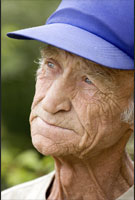
Washington resources
The statistics are startling: beginning Jan. 1, 2006, a baby boomer turns 60 at the rate of 1 per 7.5 seconds.
As “boomers” enter an age of increased vulnerability, they are more and more frequently becoming victims of abuse. According to the National Center on Elder Abuse, between 500,000 and 5 million seniors are abused every year in the United States. Frighteningly, these instances of abuse are somewhat unlikely to be reported.
Experts suggest that only 1 in 5 — and possibly only 1 in 12 — abuse cases are ever reported. From 1986 to 1996, state and federal government data suggest that there has been a 150 percent increase in reports of elder abuse in domestic settings (National Center on Elder Abuse National Incidence Summary, September 1998).
Our state’s Adult Protective Services (APS) program received 13,136 reports of abuse, abandonment, neglect, self-neglect and financial exploitation in 2006 alone. In 2006, APS received more reports of allegations of financial exploitation against vulnerable adults than any other kind of mistreatment.
Who are considered "vulnerable adults" in Washington State?
State law defines “vulnerable adults” as those:
-
60 years of age or older with a functional, physical or mental inability to care for themselves; or
-
18 years of age or older who:
-
Have certain developmental disabilities;
-
Have a guardian as per chapter 11.88 RCW;
-
Live in a nursing home, boarding home (assisted living facility), adult family home or soldier’s home;
-
Receive in-home services through a licensed health care agency, hospice or individual provider; and
-
Self-direct their own care (criteria outlined in RCW 74.39.050).
-
Why are the elderly targeted?
-
Older adults possess more physical vulnerability.
-
An increased likelihood of loneliness and physical isolation presents an opening for those who wish to exploit them.
-
They often have love or affection for the perpetrator, who might be a friend, neighbor or family member.
-
The frequency of cognitive or memory impairment increases an easily exploitable vulnerability.
-
They often lack the skills or knowledge needed to find help.
-
They present a reduced risk to the perpetrator of getting caught or prosecuted because:
-
They possess memory challenges, impacting the credibility of charges brought;
-
They may die before they are able to testify;
-
They are sometimes embarrassed to reveal their situation;
-
Victims often deny the crime;
-
They may be dependant on the abuser for assistance.
-
What is considered as mistreatment of a vulnerable adult?
-
Physical, sexual or emotional abuse
-
Abandonment
-
Neglect
-
Financial exploitation
Who are the perpetrators?
-
52 percent are men and 48 percent are women (National Elder Abuse Incidence Study 1999).
-
85 – 90 percent are family members (National Elder Abuse Incidence Study 1999).
-
Individuals who are chronically unemployed or underemployed.
-
Individuals who are financially dependent upon an elder.
-
Those suffering from drugs, alcohol or mental health issues.
-
Anyone: lawyers, guardians, financial planners or strangers.
-
Any race, religion or national origin.
These statistics were on the minds of our summit participants as they gathered in Tumwater in June of 2007. The following describes the work of the Vulnerable Adult Summit and of the resulting work groups over the last year.
State Government Agencies
- Washington State Adult Abuse and Prevention Program
- Washington State Aging & Disability Services Administration
- Washington Long-Term Care Ombudsman
- Washington State Office of the Attorney General
- Washington Department of Social and Health Services Domestic Violence Program
Laws and Regulations
Help Line and Hotlines
- Domestic/Community: 1-866-EndHarm (1-866-363-4276)
- Find County APS Office
- Nursing Home/LTC Facility: 1-800-562-6078
More Information
- Washington Aging and Disability Services Administration
- Partners in Protection: A Guide for Reporting Vulnerable Adult Abuse
- Your Legal Right to Make Decisions about Health Care & Advance Directives in Washington State

 Website Management
Website Management